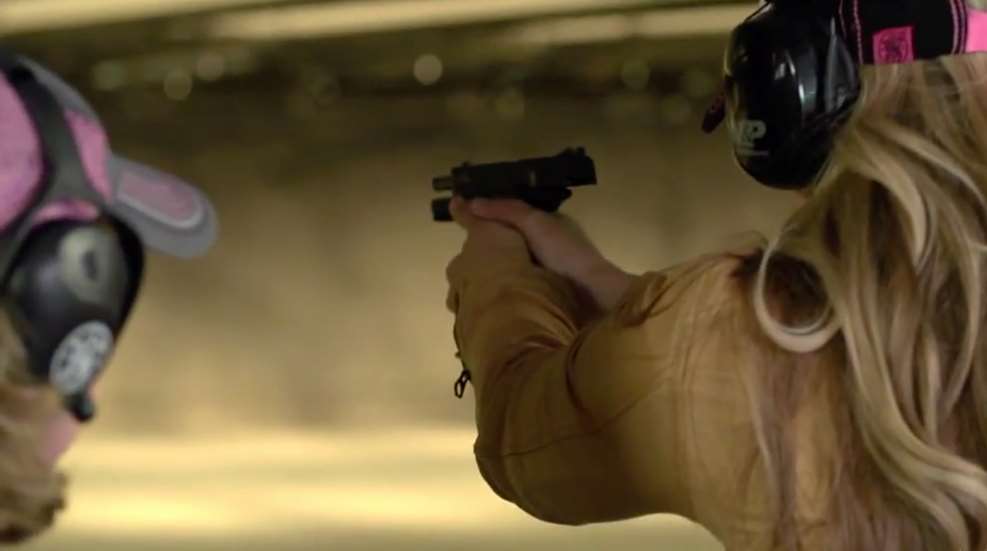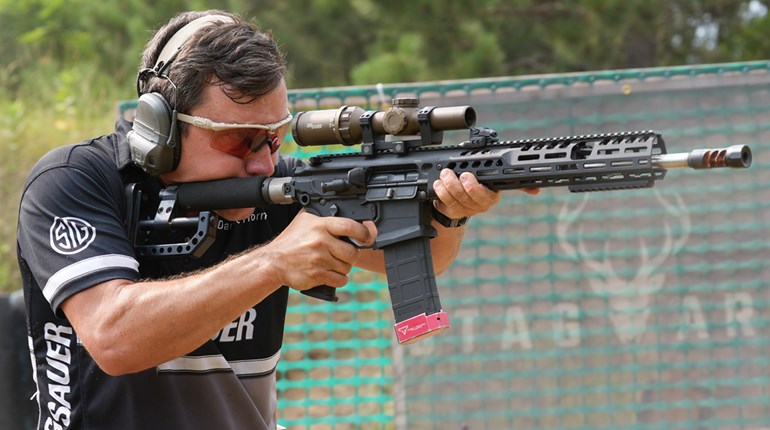
Most new gun owners will likely visit a public or commercial range to shoot for the first time. Often this is a trip to test-fire guns to see what guns they prefer before they purchase. This is a common practice, as most public ranges rent firearms for just this purpose. It’s a great plan of action to actually fire the model of gun you plan to buy before you have committed to it. Whether your first trip to a range is to rent firearms or shoot a gun you already own, you should understand a few things about public ranges and safety.
Skills to Practice at Home
If you’re a new gun owner, you already know you can practice unbagging, opening the slide of a pistol and locking it back—or opening the action of a rifle or shotgun and locking it back—at home. You should also practice handing a gun to someone else and taking a gun from someone else safely. (Of course, whether it's practice or performance, always follow the Three Rules of Gun Safety: 1. ALWAYS keep the gun pointed in a safe direction; 2. ALWAYS keep your finger off the trigger until ready to shoot; 3. ALWAYS keep the gun unloaded until ready to use.)
With handguns, focus on being able to perform all the manipulations while keeping the muzzle downrange. This seems basic to experienced gun owners, but for new gun owners, getting comfortable and proficient in handling guns is important and will make everyone safer on the range.
Pack Your Bag
Before you head to the range, if you are bringing your own gun, check that the gun is clear and put it in a gun case. Then find a range bag. This can be any old bag lying around the house or a specialized bag you’ve purchased. You want to make sure you have ammo, eye protection, ear protection and magazines, if needed. Everyone has their own range bag packing list, but other items that can be helpful are a hat, paper targets and stapler, and if shooting indoors, an over-ear set of hearing protection so that you can put them over ear plugs. Doubling up is a good idea for traditional indoor ranges with lanes right next to each other.

Call ahead to the range and find out a good time for a new shooter to come in. They might advise you a particular day and time that will be quieter and less overwhelming, when staff can give you more personal attention.
When You Arrive
The first step that you will take when you arrive at a range is to pay and figure out the range rules. Where can you uncase and handle guns safely? What skills can you practice with your firearm and what might not be allowed? If you plan to rent a firearm, find out if you need to sign a waiver, or if there is a wait to use the guns you would like. Also purchase ammo to use in the gun, if that is required.

Out on the Range
Indoor ranges generally have shooting lanes, and often you can pick whichever lane you want. Keep in mind that indoor ranges are loud, and you might want space between yourself and other people. Always set yourself up so that you can see others when you are on the range. Don’t assume others are as safe or experienced than you. Most importantly, keep your gun pointed downrange at all times: when dry firing, when loading and unloading, when you rack the slide on a pistol … the gun needs to be pointed downrange 100 percent of the time. Your safety and the safety of others depends on you following that rule.
Obey range officers and their commands. If there is no one on the range and you feel that you might need help, ask what you should do and how to contact someone. Many ranges have cameras and the staff might see you wave or ask for help. If you get stuck, say you have a jam that you can’t fix, what is their protocol? You might not have cell signal in some range buildings in order to call the front and ask for help, so know who to contact and how, if there is not a range officer directly on the range.
Movement on the Range
Most indoor ranges do not allow shooting on the move or carrying your gun between lanes, unless it is cased. Most require that you only uncase with the gun pointed downrange and not move it off the firing lane until you have ceased fire, cleared the chamber and re-cased your gun. A good rule of thumb is to not move with a gun at a commercial indoor range unless you specifically have permission. Don’t turn sideways to talk. Just set the gun down when you are doing anything but shooting.
If you have a jam or problem with a gun, leave it pointed downrange on the table in your lane. Never leave the firing line with a loaded gun! If you need to, send someone to ask for help. Don’t be shy. Call out and ask someone to get a range officer, and state that you need their help. Shooting ranges are very customer-service-oriented, and want you to be safe and get the help you need.
Safety on the Range
While most public ranges have safety staff or range officers, you should be aware that it’s not only OK to be vocal if you see something unsafe, it’s your duty to speak up and keep yourself and others safe.
If you see unsafe gun handling, call “cease fire” loudly and tell the staff. If you need to leave the line for this reason, unload and set your gun down and step back and alert the staff. Do not hesitate for even a second. You don’t have to be impolite, but you should never allow unsafe behavior with firearms. You don’t want to be around it, and ranges do not want it either. So speak up, stay aware of what’s going on around you, and stay safe.
Wrapping it Up
Knowing what to expect ahead of time will make you better prepared to accomplish your goals on the range. Take a notebook and write down your goals for the day. It might just be a list of guns you want to try, it might be a list of skills you want to work on, but whatever it is, hold yourself to a plan and enjoy it!















































